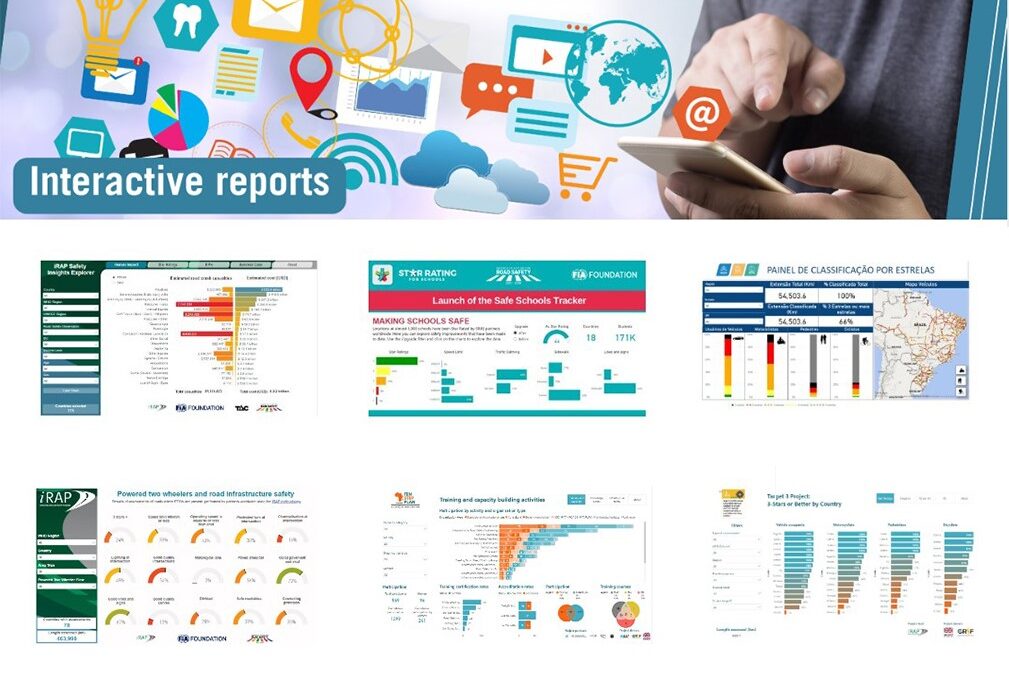iRAP has published a new Interactive Reports webpage to illustrate examples of cool data analytics that have been produced using iRAP and related data to communicate project results, the critical need to eliminate high-risk roads, and progress to safer infrastructure and built capacity.
Data analytics can be immensely powerful for examining large amounts of data to uncover hidden insights and, by presenting them in clever graphical ways, make the findings much easier to grasp with immediacy and impact. Furthermore, with the benefit of software such as Power BI, linkages can be made between data sets for cross-fertilisation of knowledge.
iRAP and its partners have produced a range of reports that demonstrate the power of this reporting and its potential to inform advocacy, policy-making, investment and action.
The webpage, which will continue to grow over time, includes:
- iRAP Safety Insights Explorer – sharing the human and economic impact of road trauma, how safe our roads are, and the positive impact that can be made with investment.
- Star Rating for Schools Safe Schools Tracker – sharing how road infrastructure upgrades are improving the safety of school journeys around the world.
- BrazilRAP Results Dashboard – sharing how the National Department of Transport Infrastructure (DNIT) is harnessing and sharing iRAP assessment data, alongside local crash and fatality data, to inform safer roads activity in Brazil.
- Powered Two-Wheeler Insights Report – to support discussions on the safety of motorcyclists, this interactive report was released to accompany the Asia Pacific Road Safety Observatory Annual Meeting.
- Tanzania Ten Step Plan Insights – this dashboard was developed as part of the iRAP Impact Evaluation the UNRSF Ten Step Tanzania Plan for Safer Road Infrastructure project.
- Target 3 Project Dashboard – shares results of the Target 3 Project analysed over 30 road corridor projects worldwide, totalling more than 2,000km of roads and designs, to examine progress towards ensuring all new roads are 3-star or better for all road users by 2030.


















